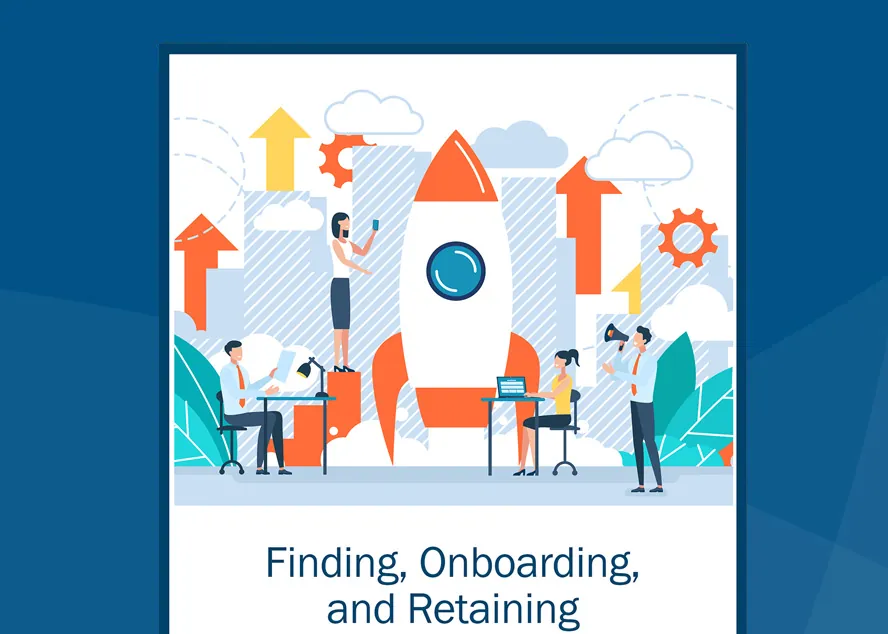The Sales Technology Conundrum

As salespeople, we frequently come across what looks like the latest in a series of game-changing, disruptive sales automation technologies. These innovative solutions promise to help companies sell faster, increase revenue per rep, and generate greater profits. As sales leaders, we love tech. But what are the limitations of technology, and can too much be a bad thing? This article explores the risks of overreliance on technology and how too much technology can hinder sales performance.
The purpose of this article is to describe the consequences of overreliance on technology. It would be a mistake to interpret our position as anti-technology. In fact, we view tech enablement as one of six main pillars that are integral to sales performance. Instead, this article serves as a voice of caution to help sales leaders separate wishful thinking from factual reality.
Can sales technology fundamentally change the nature of selling?
Sales traditionalists believe selling is immutable. Product knowledge, combined with basic sales skills, knowing your customer, and consistent daily habits, will result in sales success. On the other hand, no one can argue technology hasn’t changed how buyers and sellers interact. Therefore, technology has a fundamental impact on the nature of selling. The caveat is that sales technology can have both a positive or negative impact.
It’s challenging to find content on the negative effect of technology on sales. Tech companies produce content daily on the benefits of technology. The plethora of content can skew a sales leader’s approach. Being part of the sales community, we wanted to provide a counterbalance, even if it is unpopular. As a sales training company, we’ve seen hundreds of tech solutions within modern organizations. We have derived three principles that sales leaders can apply to prevent the overconsumption of technology in the sales stack.
Reduce Redundancy
How many companies are paying for duplicate features from multiple technology providers? Having too many applications to learn and master increases complexity and cost while frustrating sales reps. The question shouldn’t be if we have duplicate technology creating inefficiencies, but how much.
Sales leaders tend to cherry-pick the best technology to drive efficiencies when sales teams are growing. They plug in an app here, a tool there, and a widget when they need it. Over a few years, the sales tech stack balloons. As their sales process evolves, they have a variety of providers that offer overlapping solutions. For an enterprise organization, this overlap can be 25 percent or more.
The solution is simple, inventory and audit. This means tracking every solution, paid or free. It also includes auditing the provider’s capabilities. Software companies release updates and new features so frequently, even their own sales reps have difficulty keeping up. The ad hoc tech stack was okay when the sales team grew fast and furious. When the team matures, consolidating duplicated technologies allows teams to do more with less.
Combat Complacency
When sales leaders make decisions, we typically select the path that requires the least amount of cognitive effort. High-performing sales reps know this, which is why they concentrate on simplifying the complex. Technology can simplify our decision-making, which is good. But it works best when it supports a sales leader’s decision-making, not replaces it.
I will be the first to admit that the analytical power of technology is superior to humans. However, technology can create comfortable complacency. We view the automated data as unquestionable and that the technology is functioning correctly. Therefore, we become less vigilant or, worse, act on erroneous data.
For example, lead scoring is a technology widely used today. There was an enterprise client who was struggling to connect with prospects. Based on their lead scoring, their data showed quality engagement. What we discovered was there was a bug in how the software viewed open emails on mobile devices. Each open was counted numerous times and artificially inflated each lead score. It turned out that some of these prospects only opened the email to unsubscribe. Sales reps calling unsubscribed prospects, thinking they were high-value prospects, is the definition of inefficiency.
When the data contradicts what is happening, the bias is believing the data without investigation. It makes perfect sense. Marketing wanted to believe their emails were being opened because this would validate their contribution. Sales leaders wanted the technology to work because it would validate their decision. However, the sales reps were experiencing a different reality. The result was a lot of frustration, wasted effort, and prospects who felt harassed. In other words, inaccurate data created an outcome no one signed up for.
Leadership Tops Technology
When we discover the primary cause of sales underperformance, it’s never technology. The primary cause is leadership rather than lack of technology. The truth is that sales reps sell best when they are led. How else do you explain a small startup with limited resources outselling a global enterprise with extensive resources?
Confident leadership inspires sales rep confidence. In the military, they call this leading from the front. An organization with stronger leadership will outperform an organization with greater resources. Said another way, a sales team that believes in the cause they are working for will outperform a team with greater resources. Leaders create the belief in the cause, not technology.
How does a sales leader prevent technology from negatively impacting performance? The first step is to admit that technology has its limits. A failure to recognize that there are limits to the effectiveness of technology will lead to underperforming teams. Overconfidence in technology creates the belief that the next tech upgrade will be the game changer.
The second approach is defining how we measure the success of technology. Are we winning? What’s the impact? What’s the timeline? Maybe we are winning a few accounts compared to the competition, but is the score close, or was it a 100-0 shutout? Perhaps we won big a year ago, but today’s results are different.
Sales technology is not deployed in a vacuum. Competitors and buyers have a say in the outcome. When most competitors are deploying similar technology, does the value of the technology increase? Buyers quickly adopt countermeasures when exposed to new technology. A perfect example is automated bots sending messages via LinkedIn. When that feature was first rolled out, it was a great way to connect. Today, buyers receive so many unsolicited meeting requests the utility of the messaging feature has diminished.
Technology quickly becomes ubiquitous, which is why leadership tops technology. Leadership is rare and hard to duplicate. New technology can be found on Google. Leadership creates a competitive advantage, which is more difficult to copy than technology. When one company outperforms another, it’s not their technology that wins the day but the other side’s leadership failure.
In Conclusion
Technology plays a vital role in modern selling. But introducing new technology is not enough. Even when the best technology is deployed, leadership is required to motivate, train, and strategize. Technology can support leadership in these efforts, but not replace them.
I sincerely wish for sales leaders to evaluate their technology stack as critically as they do their sales team. We all want our sales team to achieve greatness, but if we only use the tech stack to automate, analyze, and track, we create a barrier that technology was supposed to fix.
Isn’t the goal to create a connection with the customer? When technology trespasses on the customer connection, it creates friction it was designed to fix.
Have a different opinion about sales technology? Post a comment below. We’d love to include you in the conversation.

- Account Planning (11)
- Awards (49)
- Client Testimonial (37)
- Personal Branding (19)
- Podcast (11)
- Research (70)
- Sales Career Development (87)
- Sales Coaching (156)
- Sales Consulting (137)
- Sales Culture (170)
- Sales Enablement (354)
- Sales Leadership (109)
- Sales Management (248)
- Sales Negotiation (16)
- Sales Prospecting (125)
- Sales Role-Playing (18)
- Sales Training (235)
- Selling Strategies (263)
- Soft Skills (70)
- Talent Management (94)
- Trusted Advisor (27)
- Virtual Selling (49)
- Webinar (9)


























